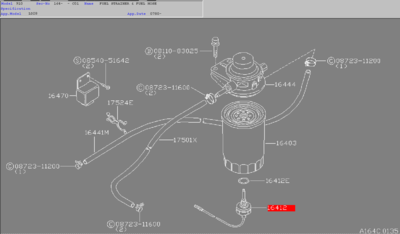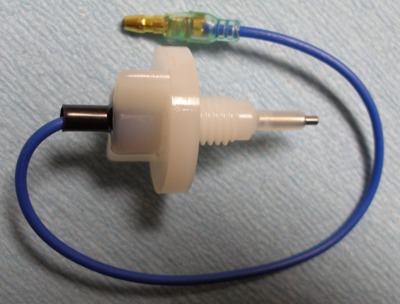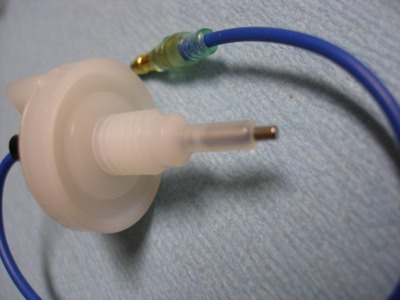First, identify the fuel filter head (black primer pump handle on top) located along the passenger inner fender opposite the IP.

Also, locate your water in fuel sensor wire (blue wire) coming off the bottom of the filter. Locate the bullet connector downstream of the sensor and slide back the rubber cover and disconnect the two.
Now if your filter has been on a long time or you don’t know how long it’s been on there you might be better off getting a filter wrench to help loosen it. First I would try to loosen it without the wrench, but if it doesn’t come loose you’ll want to use the wrench.
Once you have it loosened spin it off being careful not to damage the wiring to the sensor. With the filter free dump the contents into a separate container noting what particles come out. Mine had some chunky stuff in the bottom.

Next carefully remove the sensor from the bottom of the old filter. Do not discard the sensor, the new filter does not come with one. Also, pay close attention to the o-ring that the sensor uses to seal against the filter. I planned on using a new one but the assortment I had didn’t have one of the same thickness, so I reused the old one.

In my case the new filter was not the same length as the old one, and appears to be a bit larger in diameter.

Clean the o-ring seat on the sensor and the o-ring itself, and reinstall the o-ring in the channel on the mating surface of the sensor.

Install the sensor/o-ring combo into the new filter making sure that the o-ring stays put in the channel. Be careful here not to cross-thread the sensor when you reinstall, it's easy to do, and this is not a part you can run out and get from your local parts house.

With this completed you’re ready to install the new filter in the filter head.
Do not pre-fill the filter. This might be tempting but fuel through the filter travels from the outside in to the central core and from there up and out to the IP.
In my case the filter was a bit larger in diameter, which I didn’t think much about at the beginning, but when I went to install it I had to pull the filter head up a bit in allow it to thread on. Also make sure you keep the sensor wire moving in the direction of the filter so that it doesn’t get bound up. Once installed completely you can reconnect the sensor bullet connector.

With that done you can now think about priming the system. First get a small flat screwdriver and loosen the primer pump bleed screw. Next depress the black primer pump plunger slowly until fuel flows from the bleed screw. Reseat the bleed screw once you have fuel flowing from it. Once that’s done you need to move to the fuel return line from the IP headed toward the fuel tank.
Loosen the return line clamp, or rip it apart as I did, and remove the fuel return hose from the pipe mounted to the front frame rail. Place a container (I used a plastic glass) below the hose and continue to prime the pump with the filter head plunger until no more air gets expelled from the line. In this case I slipped a larger clear plastic tube over the black hose and moved the container up to where fuel covered the clear tube pretty quickly. Then I primed until no more air was expelled from the system. This operation didn’t take as long as one would expect since the pump was still completely filled with fuel.
Remove the tube/hose from the container, reinstall it on the return line pipe and clamp it down tight. This should conclude your fuel filter install and IP priming operation.
Alternatively, if you have a mighty-vac like Al and others have, you can avoid doing all of this priming by pulling fuel through the IP via the return line and avoid having to bleed the filter housing and the return line via the method above.
Additionally, if you get to the bleed portion of the operation and your filter head appears to be innoperative, you'll have to resort to the vacuum method for priming the system. I would recommend acquiring a vacuum pump, like the mighty vac, to handle this operation.
Also, the FSM recommends draining the fuel at the beginning by removing the sensor. I didn't go that route because there wasn't a lot of room under the old filter and I feared that fuel could potentially overflow the container and go all over everything.
Hope this helps everyone get their fuel filter tasks taken care of! If anyone found any errors in my procedure please post and let me know what I screwed up!
Steve a




